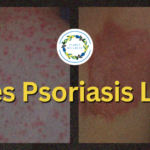What Can Iridology Diagnose?
Iridology is frequently promoted as a method of detecting various health disorders by analysing the iris, the coloured part of the eye. It has sparked both curiosity and skepticism in the world of alternative medicine. What can iridology actually diagnose? This blog will examine iridology as a practice and its diagnostic powers.
Understanding Iridology
Iridology is a holistic method that emphasizes the iris as a key component in determining health issues. Patterns, colours, and other iris characteristics can be studied to find underlying health problems. Changes in the iris can provide information about a person’s wellbeing because the iris is seen as a “window” to the body’s overall health and wellness.
What Iridology Can Diagnose
In Iridology, the iris is like a map of the body, with different regions representing different organs and systems. An Iridologist is able to spot potential health problems by thoroughly examining the iris, including:
- Organ Health
The iris can be used to determine the health of numerous organs, including the heart, liver, and kidneys. Certain marks, discolorations, or irregularities in the iris reveal information about the condition of certain organs.
Heart issues can endanger your life. Learn how Iridology is very helpful in detecting heart problems early so that they can be prevented or treated.
- Toxicity Levels
The iris is able to reveal the presence of toxins in the body. This knowledge could be used to pinpoint areas that require detoxification or changes in lifestyle in order to increase overall health and well-being.
Learn how the science of Iridology can determine the level of toxicity in your body by watching our video.
- Nutritional Deficiencies
Nutritional deficiencies can be seen in the iris. Using this knowledge, recommendations for dietary changes and supplementation to correct these deficiencies can then be made.
- Stress and Emotional Issues
The iris can be used to identify emotional and psychological states, such as anxiety and stress. An Iridology consultation can take into account both physical and emotional wellbeing.
At some point in our lives, we have all experienced stress. Even when they are under stress, some adults or young children may not express it. It’s critical to recognize stress so that it can be prevented or accordingly dealt with before it worsens and negatively impacts our health.
- Genetic Predispositions
The iris can display genetic predispositions to specific diseases. This knowledge may enable early intervention and preventative measures.
- Inflammation and Infections
Changes in the iris can reveal indicators of inflammation and infection in the body.
Conditions that Iridology Can Detect
Iridology can assist with identifying which body organs and systems are under stress and at risk of developing particular disorders or conditions. An iridologist will inspect the patient’s eye and compare the results to a chart to discover any possible medical disorders that might have led to iris changes. Additionally, measurements will be taken over time to monitor changes that show whether an illness is getting worse or getting better.
Here are some specific conditions that Iridology can detect:
- Hypertension
The presence of a ring around the iris may be a sign of elevated blood pressure as shown by a slow metabolism. If hypertension is not identified early, it can result in a number of issues, including a heart attack or stroke.
- Hyperthyroidism
Iridologists can observe changes in the appearance of the eyes over time to detect thyroid problems, which may result in bulging eyes. Bulging or inflamed eyes are a common side effect of the thyroid disorder hyperthyroidism, which can also cause Graves’ disease and thyroid eye disease. Symptoms of this condition include anxiety, fatigue, weight loss, rapid heartbeat, and trouble sleeping.
- Liver damage
Brown patches in the liver region of the iris and a yellowing of the sclera (the white part of the eye) are two symptoms of liver disease. When caught early enough, a treatment plan can often stop the progression of the disease. Liver diseases can also manifest as mental disorders like depression.
Learn how Iridology can be used to discover whether your liver is working properly by watching our video.
- Inflammation
Irritation and indicators of inflammation are shown by small dots or broken lines in the iris. Iridologists can determine what area of the body is inflamed by looking at the Iridology Chart. It’s crucial to identify inflammation early on since it can signal the onset of a number of serious medical conditions, including autoimmune diseases.
- Weakened Immune System
An Iridologist may interpret the presence of white markings in the iris as a symptom of a compromised immune system. The patient’s immunity can be strengthened and their susceptibility to illness decreased by recommending immune-boosting regimens.
The immunity in your body is one of the key systems that keeps you in good shape. Gain insights about how Iridology can discover diseases and help you before they become fully-fledged and you start to feel sick.
- Gallbladder Problems
A yellowing of the whites of the eye (sclera) or jaundice is a common indication of gallbladder and bile duct problems which may impair liver functionality.
- Digestive Problems
Problems with the digestive system, particularly the stomach and intestines, might be indicated by discolorations around the pupil. The Iridologist may be able to determine whether other seemingly unrelated health issues have underlying digestive issues.
You have 11 body systems and the digestive system is one of the most important systems in the body. Gain insights about how Iridology can detect digestive issues.
- Allergic Sensitivity
Iridologists can identify environmental and food allergies and sensitivities by looking at the blood vessels in the whites of the eyes. Iridologists compare several markers in the iris to assess the nature of the allergy or sensitivity and then recommend treatment.
- Lymphatic Health
Lymph system issues are typically detectable at certain points depending on how the lymph system interacts with the heart and lungs. This can affect the respiratory system because the lymphatic system depends on lung function to remove pollutants.
- High Cholesterol
Both excessive cholesterol and arteriosclerosis, which can be a sign of a poor diet, can be detected by a white ring around the iris.
Learn more about What Health Conditions Can Be Seen Through The Eyes by watching our insightful video.
Conclusion
Iridology is a practice that can identify a variety of health issues by examining the iris. The iris is considered by iridologists as a “window” into a person’s general health and wellbeing, and they use the iris’ patterns, colors, and other characteristics to draw conclusions.
Iridology can identify a number of health issues, such as organ health, toxic levels, nutritional deficiencies, emotional issues, genetic predispositions, inflammation, infections, and numerous medical disorders like hypertension, hyperthyroidism, liver damage, and more. Iridology is a powerful and holistic tool that can offer early insights and promote a proactive approach to well-being.
To learn more about Iridology, check out our other related blogs:
How Iridology Can Unlock The Secrets To Your Health
How Iridology Can Detect Early Signs of Disease
How Iridology Can Detect Health Issues Before They Arise
How Can Iridology Be Used To Improve Your Health?
How To Use Iridology To Spot Underperforming Organs
NEXT STEPS
Book in a complimentary 15 minutes Zoom call with us (valued at £99) to enable us to clarify questions you may have on a specific health concern.




